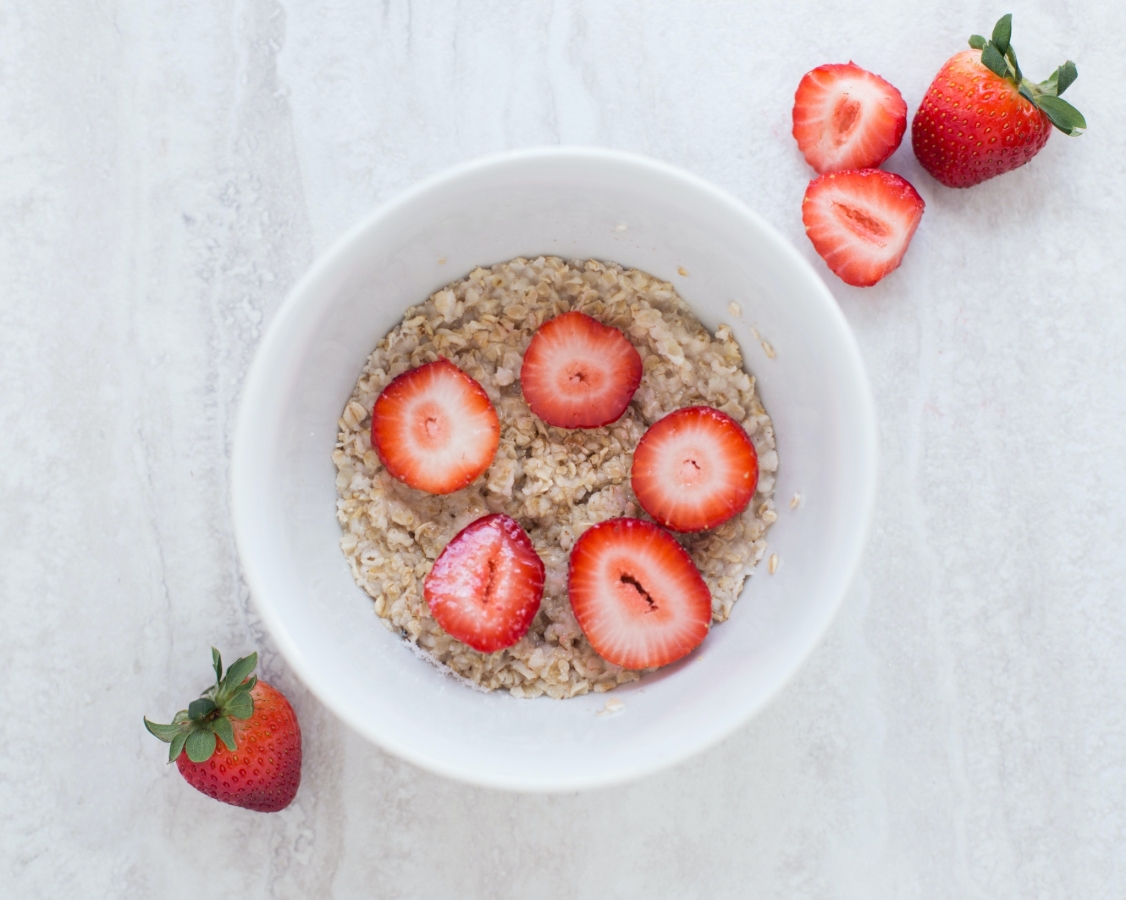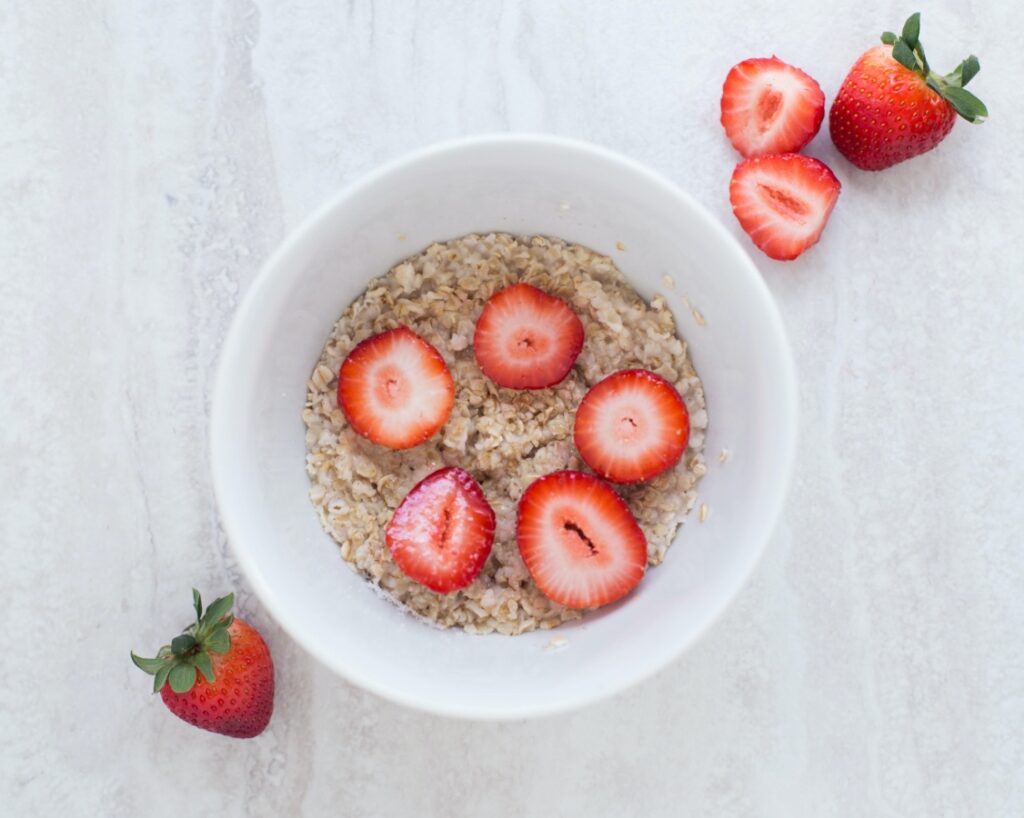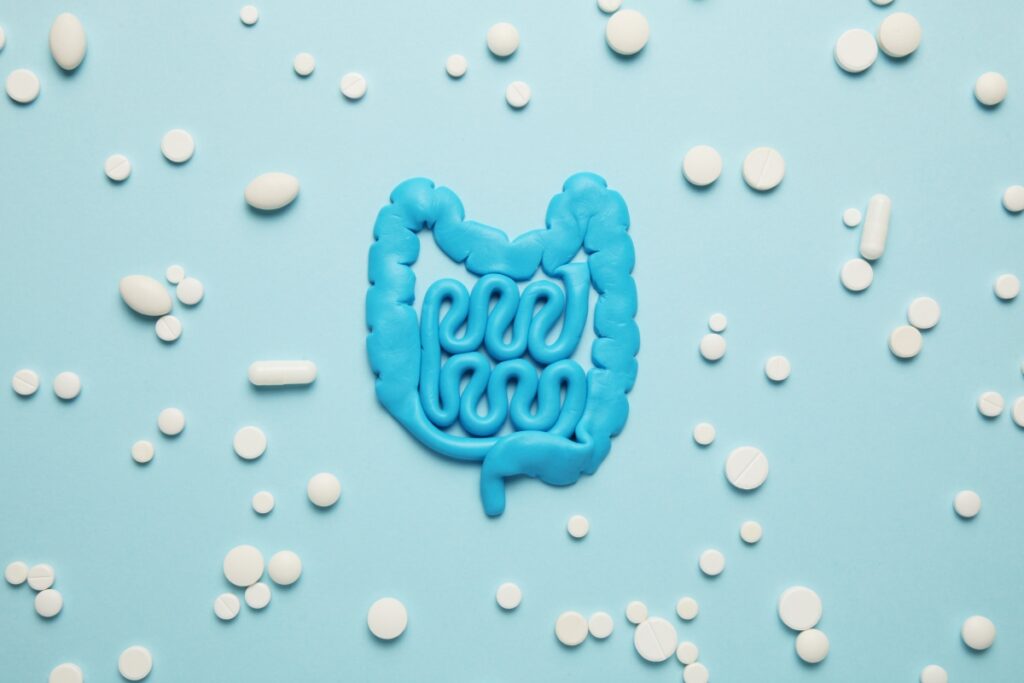
What is the difference between prebiotics and probiotics?


What is the difference between prebiotics and probiotics?
Microbes colonize our guts from birth and become integral to who we are. These vast numbers of bacteria, viruses, and fungi are collectively known as the gut microbiome. We’re just beginning to learn how this complex system affects our health, from our immunity to digestion and mental health.
Our gut microbiome needs probiotics and prebiotics to thrive. Although the words probiotics and prebiotics sound similar, they’re different things. Simply, prebiotics is foods that feed the good bacteria—the probiotics. This article will cover the science behind each and how to harness their benefits.
What are probiotics?

Probiotics are live microbes—commonly referred to as good bacteria, but they also include some fungi species. “Probiotics” originates from the Greek word “for life.”.
Probiotics are necessary for the following:
- Proper immune system functioning
- Protecting us against harmful bacteria and viruses
- Controlling the growth of harmful bacteria in the gut
- Assisting with both the digestion and absorption of nutrients.
The best probiotic for bloating also assists with this very common problem. Bacterial populations in the intestine are diverse. The gut flora is developed right after birth and stays mostly intact throughout our lives. Antibiotics are intentionally given to kill off harmful bacteria, but because of their broad-spectrum activity, they also harm our gut microbiomes. They negatively impact and change the gut flora’s composition. Introducing beneficial bacteria in the form of probiotics recreates the balance.
What is prebiotics?

Prebiotics are indigestible carbohydrates (fiber) that feed the gut bacteria—stimulating their growth and activity. Prebiotics are, therefore, beneficial for us.
Typically, anything our digestive systems don’t digest is left for our gut bacteria to consume. Our diet and how many prebiotics we eat largely determine our microbiome because the prebiotics feed good gut bacteria. Taking prebiotic supplements may improve the bacterial composition in the intestine
Prebiotics can be categorized as soluble and insoluble fibers.
Dietary fiber is important for our health and should be a regular part of our diets . It’s found only in plant-based foods. You should know that peeling vegetables reduces their fiber content, but cooking does not affect fiber content.
Examples of soluble dietary fibers include:
- Pectins—Part of the plant’s cell wall; found in fruits and vegetables
- Mucilages—Produced by plants and used in the food industry; found in plant extracts (like gum acacia)
- Gums—Secreted at the site of plant damage; found in seaweed extract, leguminous seed plants, and microbial gums.
Examples of insoluble dietary fibers:
- Resistant starch—Starch that is not digested because of its structure. So, the starch acts like dietary fiber.
- Cellulose—The main structural component of plant cell walls; found only in plants
- Hemicelluloses—found in cereal grains
- Lignin—Found in flax, rye, and some vegetables.
Although prebiotics and probiotics supplements are different and individually beneficial, taking them together may increase their benefits even further.
Stuck with excess fat?
While excess calorie intake is the main driver behind obesity, changes in the gut microbiota composition are another important cause of unwanted excess fat. This is partly because the gut is the home of many microbes that send signals to our brains when hungry. An imbalance here may prevent these signals from working correctly, leading to overeating.
Using the best prebiotics and probiotics, along with a healthy diet and exercise regimen, will help you to decrease your body mass index (BMI) and total body fat.
Why should you take both probiotics and prebiotics?

As we’ve said, probiotics are good bacteria that are crucial for our well-being, while prebiotics are indigestible dietary fibers that feed the probiotics in the gut
When prebiotics and probiotics are combined, we call them synbiotics. Synbiotics improve the gut flora by stimulating the growth of good bacteria and benefitting our health in many ways.
Why you should combine both probiotics and prebiotics (synbiotics):
- Prebiotics aid the growth and strength of probiotics—good bacteria. Taking these two together—synbiotics—help the probiotics work better.
- Prebiotics aid the survival of probiotics. The stomach is an acidic environment that can kill most bacteria. Probiotics must survive the stomach acid and bile to make themselves home in our guts. Studies show that providing food for them improves their chances of survival in these harsh conditions.
- Compared to the activity of probiotics or prebiotics alone, synbiotics promise a better effect on the gut flora.
- When the probiotics consume the prebiotics, they create postbiotics. Generally speaking, postbiotics are beneficial. Postbiotics are not live bacteria but benefit health by modulating the immune system, preventing inflammation, and more.
- One of the most beneficial postbiotics is butyrate. It feeds the gut cells, has strong immune-balancing properties, and improves intestinal barrier function (preventing leaky gut).
- Synbiotics are more effective against harmful bacteria than probiotics and prebiotics by themselves. Synbiotics inhibit the growth of harmful bacteria while promoting the growth of beneficial bacteria.
Conclusion
Our gut microbiota is a reflection of our health. Diet and lifestyle choices directly affect gut microbiota composition. Probiotics can fix disrupted microbiota. To improve the efficacy and survival of probiotics, you should take prebiotics with probiotics. Prebiotics strengthen good bacteria and make probiotics more effective. Prebiotics and probiotics make a dream team and should be taken together to achieve the best results. We depend on our good bacteria and should feed and nurture them as they affect everything else in our bodies.
Here are our three synbiotic products:
- Probiotic Breakthrough PATENTED PROBIOTIC PLUS PREBIOTIC SUPPLEMENT WITH LACTOBACILLUS PLANTARUM OM
- Survives stomach acid and digestion
- Antimicrobial activity against harmful bacteria
- Produces protein-digesting enzymes
- Promotes bowel regularity
- Reduces bloating and gassiness
Lactobacillus plantarum strains are essential probiotics, part of the lactic acid bacteria group.
The applications of L. plantarum include:
- Promotes healthy cholesterol levels
- Supports regularity
- Promotes healthy gut flora
- Supports digestive regularity
- Cognibiotics — This mood-enhancing supplement with synbiotics ensures both brain and gut health.
This cognibiotic product includes a proprietary probiotic blend containing Lactobacillus (casei, rhamnosus, reuteri, helveticus, fermentum) and Bifidobacterium (animalis, breve, longum, infantis).
Lactobacillus members are one of the most abundant microorganisms in the human gut and are essential for a healthy gut. Along with Lactobacillus members, members of the Bifidobacterium family are among the first microbes to make themselves at home in the human gut at birth and are beneficial for proper gut health.
- Biome Breakthrough — You can even pick a flavor! Vanilla? Or perhaps chocolate?
MICROBIOME BREAKTHROUGH® – VANILLA is a vegetarian, gluten-free, and dairy-free option. It is effective against harmful bacteria while replenishing the good bacteria and repairing the gut lining.
MICROBIOME BREAKTHROUGH® – CHOCOLATE is a gluten-free and dairy-free option. It unseeds harmful bacteria and replaces them with good bacteria while repairing the gut lining.
References
- Hills RD Jr, Pontefract BA, Mishcon HR, Black CA, Sutton SC, Theberge CR. Gut microbiome: Profound implications for diet and disease. Nutrients. 2019;11(7):1613.
- Shi LH, Balakrishnan K, Thiagarajah K, Mohd Ismail NI, Yin OS. Beneficial properties of probiotics. Trop Life Sci Res. 2016;27(2):73-90.
- Gupta V, Garg R. Probiotics. Indian J Med Microbiol. 2009;27(3):202-209.
- Linares DM, Ross P, Stanton C. Beneficial Microbes: The pharmacy in the gut.. Bioengineered. 2016;7(1):11-20.
- Zhang S, Chen D-C. Facing a new challenge: the adverse effects of antibiotics on gut microbiota and host immunity. Chin Med J (Engl). 2019;132(10):1135-1138.
- Davani-Davari D, Negahdaripour M, Karimzadeh I, et al. Prebiotics: Definition, types, sources, mechanisms, and clinical applications. Foods. 2019;8(3):92.
- Holscher HD. Dietary fiber and prebiotics and the gastrointestinal microbiota. Gut Microbes. 2017;8(2):172-184.
- David LA, Maurice CF, Carmody RN, et al. Diet rapidly and reproducibly alters the human gut microbiome. Nature. 2014;505(7484):559-563.
- Slavin J. Fiber and prebiotics: mechanisms and health benefits. Nutrients. 2013;5(4):1417-1435.
- Dhingra D, Michael M, Rajput H, Patil RT. Dietary fibre in foods: a review. J Food Sci Technol. 2012;49(3):255-266.
- Williams BA, Mikkelsen D, Flanagan BM, Gidley MJ. “Dietary fibre”: moving beyond the “soluble/insoluble” classification for monogastric nutrition, with an emphasis on humans and pigs. J Anim Sci Biotechnol. 2019;10(1):45.
- Slavin JL. Carbohydrates, dietary fiber, and resistant starch in white vegetables: links to health outcomes. Adv Nutr. 2013;4(3):351S-5S.
- Ferrarese R, Ceresola ER, Preti A, Canducci F. Probiotics, prebiotics and synbiotics for weight loss and metabolic syndrome in the microbiome era. Eur Rev Med Pharmacol Sci. 2018;22(21):7588-7605.
- Aoun A, Darwish F, Hamod N. The influence of the gut microbiome on obesity in adults and the role of probiotics, prebiotics, and synbiotics for weight loss. Prev Nutr Food Sci. 2020;25(2):113-123.
- Gurry T. Synbiotic approaches to human health and well-being. Microb Biotechnol. 2017;10(5):1070-1073.
- Kolida S, Gibson GR. Synbiotics in health and disease. Annu Rev Food Sci Technol. 2011;2(1):373-393.
- Pace F, Pace M, Quartarone G. Probiotics in digestive diseases: focus on Lactobacillus GG. Minerva Gastroenterol Dietol. 2015;61(4):273-292.
- Corcoran BM, Stanton C, Fitzgerald GF, Ross RP. Survival of probiotic lactobacilli in acidic environments is enhanced in the presence of metabolizable sugars. Appl Environ Microbiol. 2005;71(6):3060-3067.
- Markowiak P, Śliżewska K. Effects of probiotics, prebiotics, and synbiotics on human health. Nutrients. 2017;9(9):1021.
- Żółkiewicz J, Marzec A, Ruszczyński M, Feleszko W. Postbiotics-A step beyond pre- and probiotics. Nutrients. 2020;12(8):2189.
- Teame T, Wang A, Xie M, et al. Paraprobiotics and postbiotics of probiotic Lactobacilli, their positive effects on the host and action mechanisms: A review. Front Nutr. 2020;7:570344.
- Liu H, Wang J, He T, et al. Butyrate: A double-edged sword for health? Adv Nutr. 2018;9(1):21-29.
- Parian AM, Mullin GE, Langhorst J, Brown AC. Inflammatory bowel disease. In: Integrative Medicine. Elsevier; 2018:501-516.e8.
- Zhao W, Peng C, Sakandar HA, Kwok L-Y, Zhang W. Meta-analysis: Randomized trials of Lactobacillus plantarum on immune regulation over the last decades. Front Immunol. 2021;12:643420.
- Liu Y-W, Liong M-T, Tsai Y-C. New perspectives of Lactobacillus plantarum as a probiotic: The gut-heart-brain axis. J Microbiol. 2018;56(9):601-613.
- Seddik HA, Bendali F, Gancel F, Fliss I, Spano G, Drider D. Lactobacillus plantarum and Its Probiotic and Food Potentialities. Probiotics Antimicrob Proteins. 2017;9(2):111-122.
- Heeney DD, Gareau MG, Marco ML. Intestinal Lactobacillus in health and disease, a driver or just along for the ride? Curr Opin Biotechnol. 2018;49:140-147.
- O’Callaghan A, van Sinderen D. Bifidobacteria and their role as members of the human gut Microbiota. Front Microbiol. 2016;7:925.
